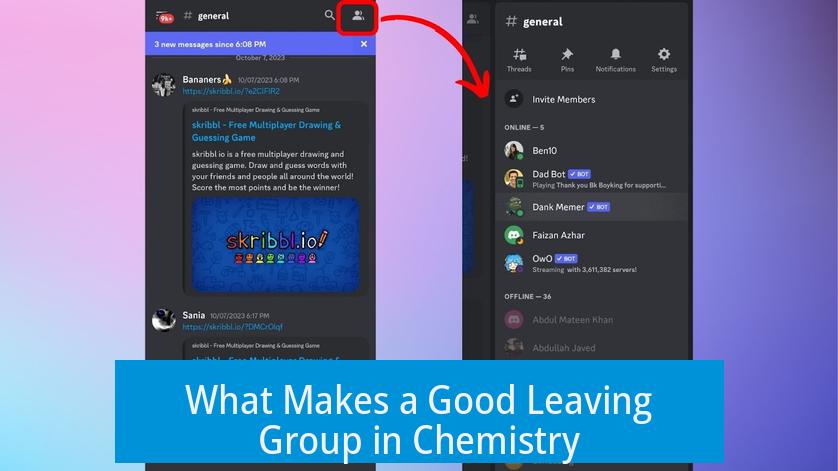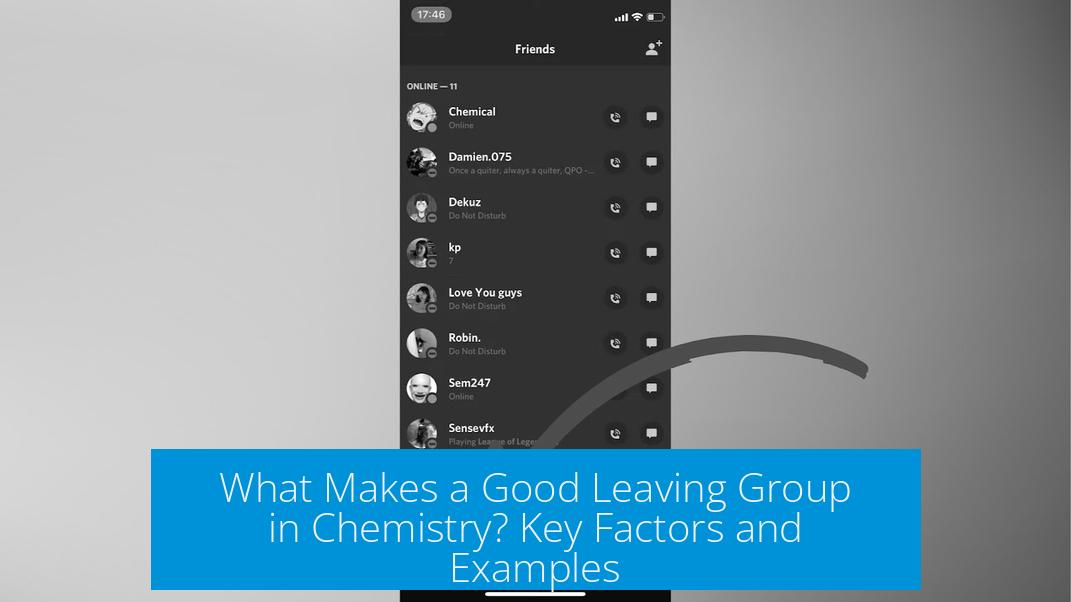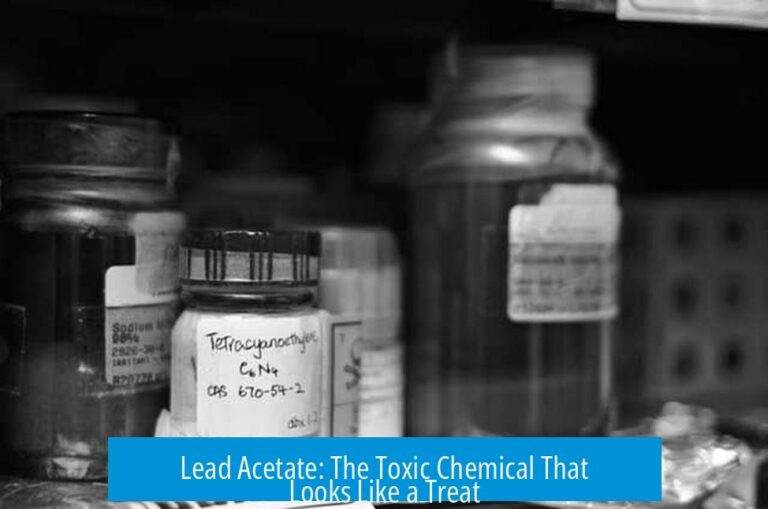What Makes a Good Leaving Group in Chemistry?

A good leaving group is characterized by its ability to stabilize itself after departing from a molecule, making it stable on its own and often correlating with a low pKa value of its conjugate acid.
Stability of the Leaving Group

The fundamental criterion for a good leaving group is its stability once it has detached from the parent molecule. If it can exist independently without rapidly reacting or decomposing, it qualifies as a good leaving group. This stability affects the rate and feasibility of many substitution and elimination reactions in organic chemistry.
Examples of Stable Leaving Groups

- Water (H2O): The water molecule is a classic stable leaving group after protonation in reactions such as acid-catalyzed substitutions.
- Conjugate bases of strong acids: Groups such as halides (I-, Br-, Cl-), tosylate (TsO-), and triflate (CF3SO3-) show good leaving group ability due to the high stability of their conjugate acids.
Role of Ion Stability After Electron Pair Acceptance
Upon leaving, the group gains an electron pair from the broken bond, often forming an anion. Good leaving groups are typically highly electronegative ions that can stabilize this extra electron density. For instance, iodide (I-) is an excellent leaving group because it can accommodate the negative charge effectively, owing to its large atomic size and electronegativity.

pKa as a Predictor of Leaving Group Ability
The pKa of the conjugate acid accompanying the leaving group is a widely accepted predictor. Lower pKa values reflect stronger acids, implying their conjugate bases are more stable. Therefore, a leaving group whose conjugate acid has a low pKa is more likely to depart readily.
| Conjugate Acid | Approximate pKa | Leaving Group Quality |
|---|---|---|
| HI | -10 | Excellent (I-) |
| HBr | -9 | Excellent (Br-) |
| HCl | -6 | Good (Cl-) |
| H2O | ~15.7 | Moderate (H2O) |
Additional Learning Resources
The Master Organic Chemistry article offers a detailed exploration of leaving group properties, presenting mechanistic insights and practical examples.
Key Points to Remember
- Good leaving groups are stable species after detachment.
- They are usually conjugate bases of strong acids with low pKa values.
- Highly electronegative ions like iodide stabilize extra electrons well.
- Water acts as a leaving group in many acid-catalyzed reactions.
- pKa values provide a quantitative measure to predict leaving group efficiency.
What Makes a Good Leaving Group? Unpacking the Chemistry Puzzle
Simply put, a good leaving group is one that can leave easily and remain stable once it departs. When molecules react, parts of them break off—these parts are the “leaving groups.” But not all leaving groups are created equal. The star players in this chemical theater are those capable of sticking around comfortably after saying goodbye.
Let’s dive into what really separates a great leaving group from the rest. It isn’t magic; it’s about stability. More specifically, the ability of the leaving group to remain stable after it breaks away from the parent molecule. If it can hold its ground alone, you’ve found a good candidate.
The Bedrock: Stability Drives Leaving Group Quality
Imagine you just lost a friend from your group. If they handle the situation calmly and keep their own life balanced, you’re less worried. Same concept here. If the species (ion or molecule) that leaves can maintain stability on its own, it’s a good leaving group.
This explains why certain molecules win the popularity contest as leaving groups. Stability is often linked to how well an ion can hold onto or distribute extra electron pairs it gains when it parts ways. For instance, electronegative atoms are adept at this—they’re like the chemical equivalent of cool, collected individuals in stressful moments.
Examples: Water and Conjugate Bases of Strong Acids
Let’s talk specifics. Water (H2O) is a classic example of a stable leaving group. When it leaves, it remains just as happy as when it arrives—neutral and neutralized. No big fuss.
- Water’s stability post-departure makes it an easy exit door in reactions.
- Conjugate bases of strong acids (think: chloride ion Cl- from hydrochloric acid) are also excellent leavers.
Why? Because these conjugate bases are very stable on their own. The acids they come from are so eager to donate protons that their conjugates are quite comfortable hanging solo. Their “pKa values” help us understand this part. The lower the pKa of the conjugate acid, the better the leaving group.
Why pKa is Chemistry’s Crystal Ball for Leaving Groups
The pKa value of the conjugate acid gives chemists a sneak peek into how good a leaving group a species will be. Here’s the trick: the stronger the acid (meaning a low pKa), the more stable its conjugate base as a leaving group.
This makes sense when you think about it. If the conjugate acid is really willing to lose a proton (and is stable post loss), its conjugate base must be quite content standing on its own—perfect for leaving!
Take the iodide ion (I-) for example. Iodine, being highly electronegative, easily stabilizes its extra electrons, so it’s a champ leaving group. Its parent acid, hydroiodic acid (HI), has a low pKa (around -10), confirming iodide’s prowess.
Electron Pair Acceptance: The Secret Sauce
Another way to think about leaving groups is how well they stabilize after snatching a pair of electrons during bond cleavage. Good leaving groups lovingly accept these electrons, avoiding reactive outbursts.
Electronegative ions like iodide, bromide, and chloride shine here. Their electron affinity lets them spread out the charge. This electronic grace keeps them steady. That’s their claim to fame as leaving groups.
Where to Learn More? The Nutritional Label on Leaving Groups
For those crunching chemistry numbers or trying to make heads or tails of leaving groups, Master Organic Chemistry’s article is a treasure trove. It breaks down why leaving groups matter and how to identify reliable ones. Trust me—it’s like having a guidebook for your chemistry adventures.
Picking the Right Leaving Group: What Does This Mean in Practice?
Say you’re synthesizing a molecule and need a leaving group that doesn’t cause drama. You want something that meets these criteria:
- Stability when it leaves—no reactive fireworks.
- Low pKa conjugate acid—meaning the base is chill on its own.
- Electronegativity to manage extra electrons smoothly.
- Examples like water, halides (iodide, bromide, chloride), or conjugates of strong acids.
Ignoring these points is like inviting a rowdy guest to your chemistry party—things get messy fast.
Conclusion: Get Your Chemistry Leaving Groups Right!
In the end, a good leaving group just needs to be stable and comfortable after breaking off. If it’s too reactive or unstable, the reaction slows down or fails altogether.
So next time you’re puzzling over which group will leave the scene gracefully, think stability, electronegativity, and pKa. Quick exit, no fuss. Chemistry’s version of the perfect parting gift!





Leave a Comment